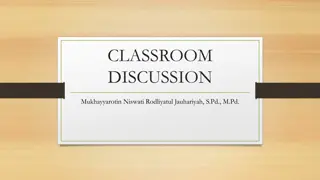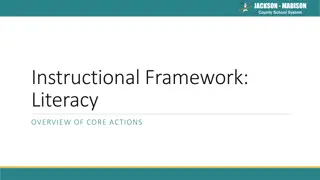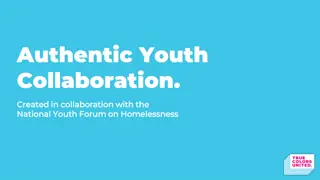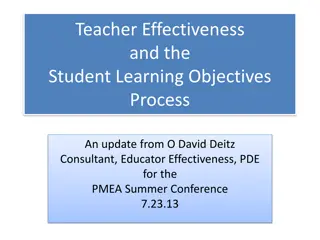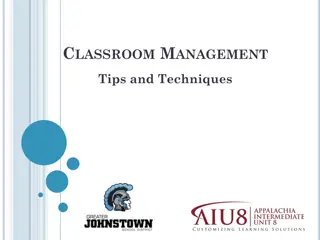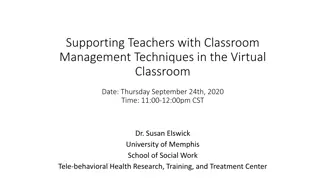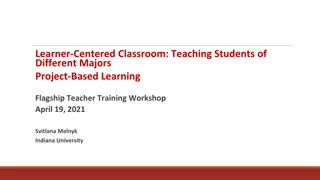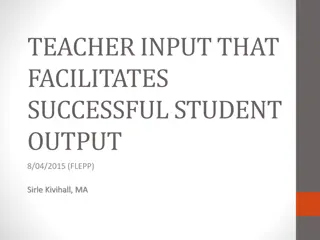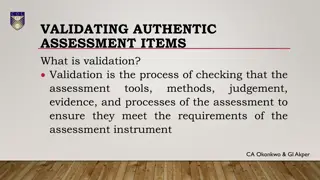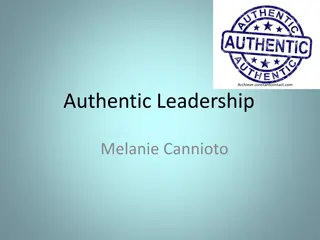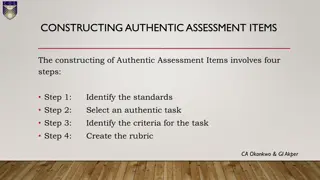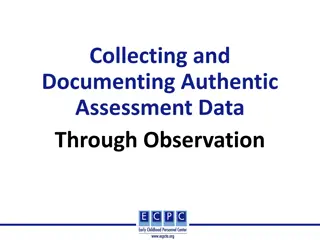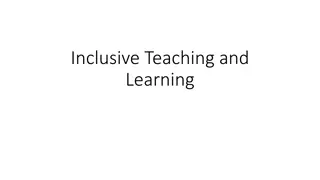Enhancing Classroom Environment for Authentic Learning
Improve your classroom environment to create a welcoming space by embracing authenticity. Discover the meaning of authenticity in teaching, as advocated by Carl Rogers. Follow five practical steps to be authentically yourself, fostering trust and respect with students for a successful learning environment.
Download Presentation

Please find below an Image/Link to download the presentation.
The content on the website is provided AS IS for your information and personal use only. It may not be sold, licensed, or shared on other websites without obtaining consent from the author.If you encounter any issues during the download, it is possible that the publisher has removed the file from their server.
You are allowed to download the files provided on this website for personal or commercial use, subject to the condition that they are used lawfully. All files are the property of their respective owners.
The content on the website is provided AS IS for your information and personal use only. It may not be sold, licensed, or shared on other websites without obtaining consent from the author.
E N D
Presentation Transcript
Improving the classroom environment How to improve classroom environment? My classroom is so unwelcoming and dull! Even I feel my spirits sinking when I walk in. Goodness knows how the learners feel. Page 23-25 should be read
Being yourself What does Authenticity mean?
Authenticity means behaving in a way that is appropriately real, appropriately you - letting the students see something of your genuine/real reactions to things, your moods and your natural behaviour, rather than covering everything up in a performance.
Carl Rogers, the US educational psychologist He believed that authenticity created the conditions for good rapport/harmony and helped build a real depth/deepness of trust and respect, and that this made the difference between a successful classroom and an unsuccessful one.
* Five steps to authenticity 1. Don't try to be a 'teacher 2. Have real conversations 3. Don't pretend omniscience 4. Be wary of staffroom advice 5. Be appropriately authoritative
1. Don't try to be a 'teacher' Stop yourself whenever you find yourself behaving more as a job title rather than as yourself. Don't speak as if you are some sort of official mouthpiece for the teaching profession or your school. Don't seek out additional ways of differentiating yourself as a teacher.
2 Have real conversations When you chat informally with a student, make it a reaI conversation, where you really listen to what they have to say and respond appropriately. Give your own genuine personal reactions to student comments. If something a student says makes you disagree, say so, instead of 'Hmrnm, interesting'.
3. Don't pretend omniscience If you don't know an answer to a question, say that, rather than pretending that you do know or confusing students with roundabout explanations and avoidances.
4. Be wary of staffroom advice Colleagues may tell you that being genuinely warm and friendly with students is dangerous, or that it is essential for a teacher to keep up a front- as someone reserved, formal and a little distant. Their comments are probably well-intentioned, but treat such advice cautiously, and make sure you think it through for yourself before you decide to follow it.
5. Be appropriately authoritative Being authentic doesn't mean abdicating/abandon the responsibilities and duties of a teacher. You can still give all the instructions, set all the homework and all the things that you need to do. You can be appropriately authoritative. The difference is that it is you being authoritative, not you using the cloak/mask of teacher superiority and hierarchical authority to do it.





